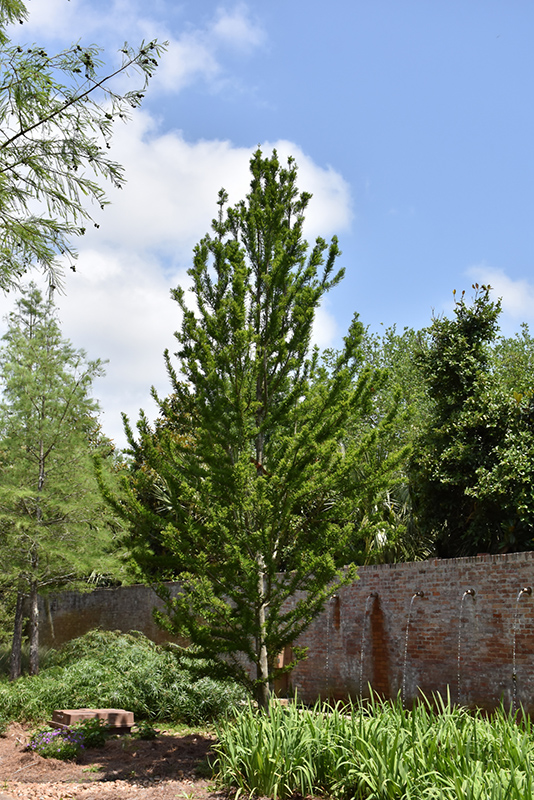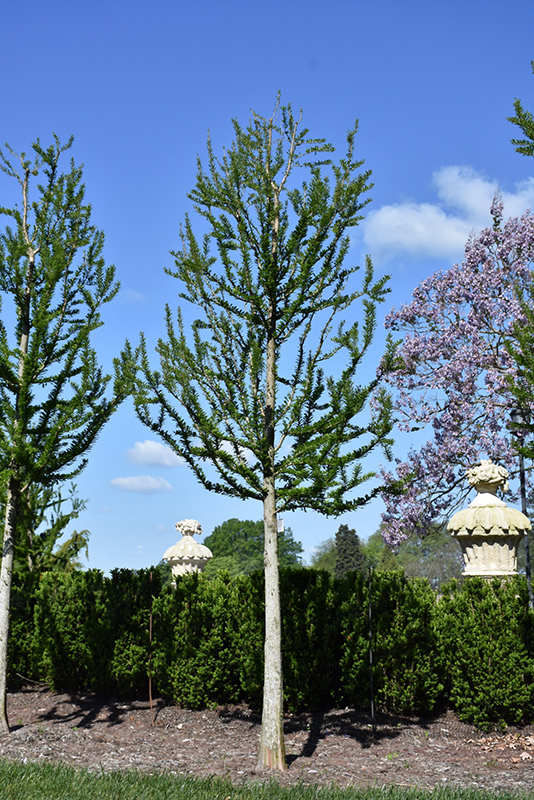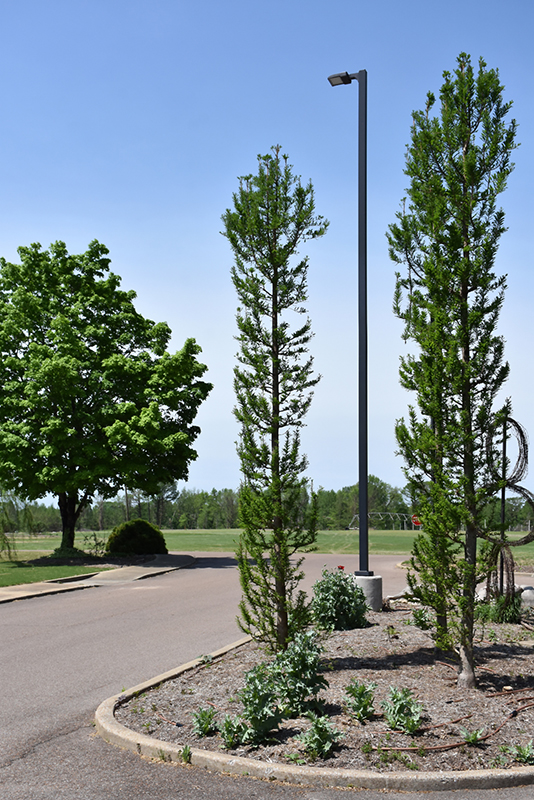Plant Search
Peve Minaret Baldcypress
Taxodium distichum 'Peve Minaret'
Height: 10 feet
Spread: 4 feet
Sunlight:
![]()
Hardiness Zone: 4a
Description:
Unique specimen for a rain garden or smaller space where a fine texture is needed; soft, lush green foliage and exfoliating mahogany colored bark provide interest, needle-like foliage turns a coppery color in fall
Ornamental Features
Peve Minaret Baldcypress is primarily valued in the landscape or garden for its distinctively pyramidal habit of growth. It has attractive green deciduous foliage which emerges light green in spring. The ferny bipinnately compound leaves are highly ornamental and turn an outstanding gold in the fall. The shaggy antique red bark adds an interesting dimension to the landscape.
Landscape Attributes
Peve Minaret Baldcypress is a deciduous tree with a distinctive and refined pyramidal form. It lends an extremely fine and delicate texture to the landscape composition which can make it a great accent feature on this basis alone.
This is a relatively low maintenance tree, and is best pruned in late winter once the threat of extreme cold has passed. Deer don't particularly care for this plant and will usually leave it alone in favor of tastier treats. It has no significant negative characteristics.
Peve Minaret Baldcypress is recommended for the following landscape applications;
- Vertical Accent
Planting & Growing
Peve Minaret Baldcypress will grow to be about 10 feet tall at maturity, with a spread of 4 feet. It has a low canopy with a typical clearance of 3 feet from the ground, and is suitable for planting under power lines. It grows at a slow rate, and under ideal conditions can be expected to live for 80 years or more.
This tree should only be grown in full sunlight. It is an amazingly adaptable plant, tolerating both dry conditions and even some standing water. It is not particular as to soil type, but has a definite preference for acidic soils. It is somewhat tolerant of urban pollution. Consider applying a thick mulch around the root zone in winter to protect it in exposed locations or colder microclimates. This is a selection of a native North American species.
A NetPS Plant Finder tool




